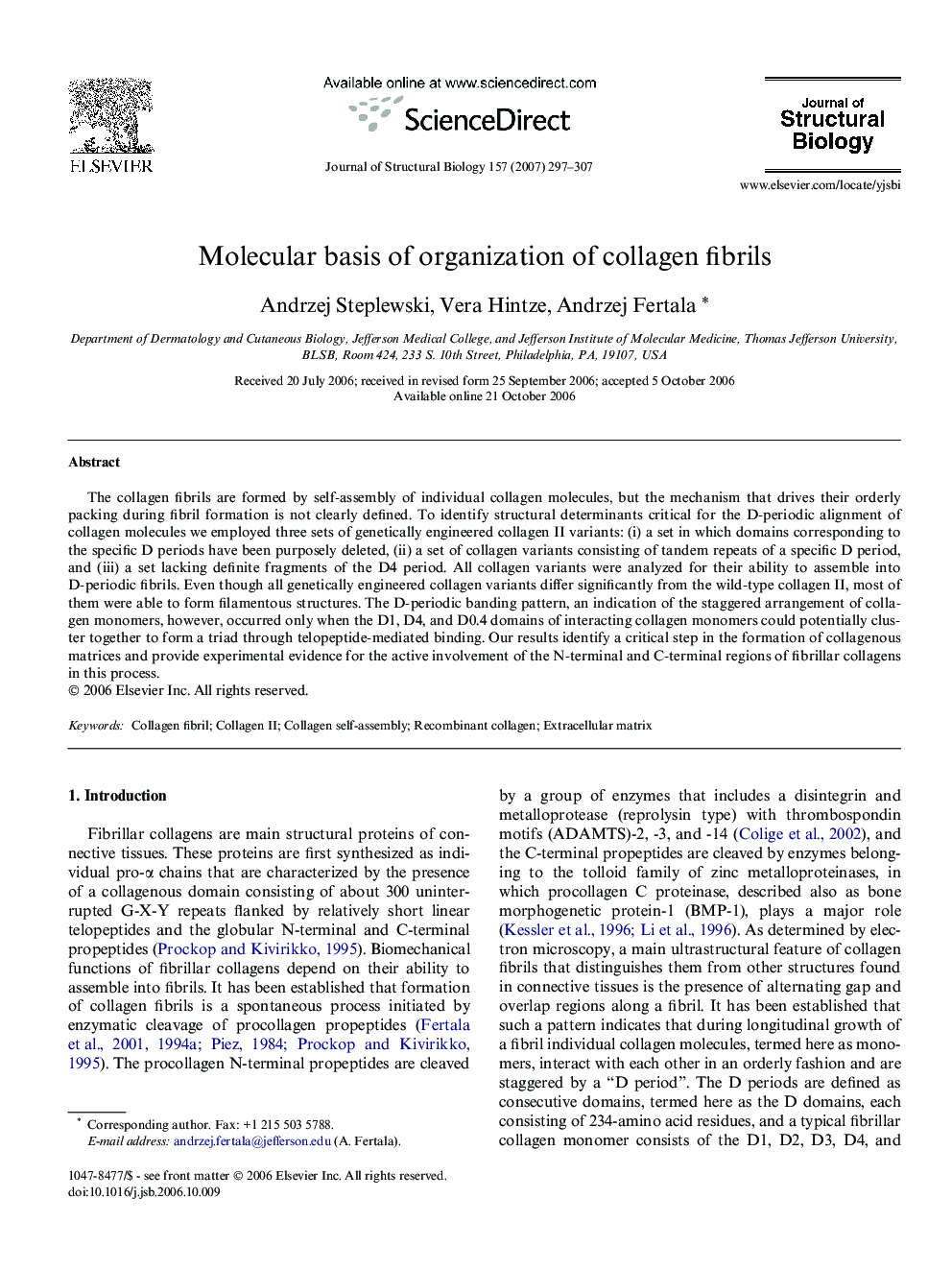| Article ID | Journal | Published Year | Pages | File Type |
|---|---|---|---|---|
| 2829504 | Journal of Structural Biology | 2007 | 11 Pages |
Abstract
The collagen fibrils are formed by self-assembly of individual collagen molecules, but the mechanism that drives their orderly packing during fibril formation is not clearly defined. To identify structural determinants critical for the D-periodic alignment of collagen molecules we employed three sets of genetically engineered collagen II variants: (i) a set in which domains corresponding to the specific D periods have been purposely deleted, (ii) a set of collagen variants consisting of tandem repeats of a specific D period, and (iii) a set lacking definite fragments of the D4 period. All collagen variants were analyzed for their ability to assemble into D-periodic fibrils. Even though all genetically engineered collagen variants differ significantly from the wild-type collagen II, most of them were able to form filamentous structures. The D-periodic banding pattern, an indication of the staggered arrangement of collagen monomers, however, occurred only when the D1, D4, and D0.4 domains of interacting collagen monomers could potentially cluster together to form a triad through telopeptide-mediated binding. Our results identify a critical step in the formation of collagenous matrices and provide experimental evidence for the active involvement of the N-terminal and C-terminal regions of fibrillar collagens in this process.
Related Topics
Life Sciences
Biochemistry, Genetics and Molecular Biology
Molecular Biology
Authors
Andrzej Steplewski, Vera Hintze, Andrzej Fertala,
